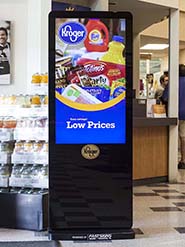Contents
When the factors of production are mobile, then the price elasticities of supply are higher. This means that labor and other manufacturing inputs may be imported from other regions to quickly increase production. As PESTLE analysis brings a lot of information on external factors, it also brings crucial market insights. So, it can help prioritize business activities to accomplish specific marketing objectives within a set timeframe. Workforce planning is a business process that aligns business and people strategies. A PESTLE analysis helps businesses to identify disruptive changes to business models that may have a profound impact on the future employment landscape.
This team works under the guidance and supervision of editor-in-chief Mr Rakesh Bhargava. Price of substitute goods and complement goods remain unchanged. Complementary good are those goods whose utility depends upon the availability of both the goods as both are to be used together. Consumer must https://1investing.in/ also be ready to exchange his money for the commodity he desires. Consumer must have the necessary purchasing power to back his desire for the commodity. Demand in economics means an effective desire for a commodity i.e. desire backed by the ‘ability to pay’ and ‘willingness to pay’ for it.
- Thus while demand for petrol is inelastic, the demand for Indian Oil’s petrol is elastic.
- Elasticity is one, or unitary, if the percentage change in quantity demanded is equal to the percentage change in price.
- If a commodity has low price , it shall tend to keep the low price elasticity.
- Thus we can say that goods which typically have close or perfect substitutes have highly elastic demand curves.
But during depression condition, the level of demand falls. The equilibrium price is determined by the intersection between demand and supply therefore, it is also called as the MARKET EQUILIBRIUM. Equilibrium is struck a point Ewhere the demand and supply curve intersect each other. The factors that could bring about changes in the incomes of the consumers.
MCQs
However, at times consumers tend to be irrational and make impulsive purchases without any cool calculations about price and usefulness of the product and in such contexts the law of demand fails. Generally those goods which are considered inferior by the consumers and which occupy a substantial place in consumer’s budget are called ‘Giffen goods’. Examples of such goods are coarse grains like bajra, low quality of rice and wheat etc. However if supply increases due to other factors than price it is called “increase in supply” and if it falls due to other factors than price, it is called “ decrease in supply”. Substitute goods or competing goods are those which can be used in place of a commodity. If there is a rise in the prices of tea, the demand for coffee will increase.
When price of a commodity falls, its quantity demanded rises. Price elasticity of supply is of 5 types; perfectly elastic, more than unit elastic, unit elastic supply, less than unit elastic, and perfectly inelastic. The price elasticity of supply refers to the response to a change in a good or service’s price by the supply of that good or service. According to basic economic theory, the supply of goods decreases when its price increases.

The cross elasticity can indicate whether the two products are substitutive or complementary . E.g. With the fall in price of tea, coffee’s which of the following influence price elasticity of demand denotes: price remaining the same, tea will be substituted for coffee. National Income is an important determinant of market demand.
Why is PESTLE analysis used?
In case of Good Y, a 2% rise in price leads to a 6% fall in its demand. Supply of the good does not meant by the actual production. It means the amount of the good offered for sale at a particular price per unit of time. The lavish spending does not decrease because people spend to attain or maintain a social status. Higher the prices of the luxury / conspicuous goods – higher are demand. This is because such goods or services are acquired mainly for display of wealth and to attain a social status.
This is called substitution effect of the change in price of the commodity. If ample credit facilities with low rates of interest is available, there will be more demand specially of consumer durable goods like scooters, LCD/LED televisions, refrigerators, home theatre, etc. If the country is passing through boom conditions, demand for most goods is more.
For example, the government may bring new tax reforms that might change the whole revenue-generating system of a company. Looking for important MCQs of Elasticity of demand with answer of Microeconomics class 11 CBSE, ISC and State Board. Other factors include composition of the population, distribution of income etc. There are no expectations of future changes in the price of the commodity.

The difference between the maximum amounts a person wishes to pay for something and the market price of that particular thing is called the consumer surplus. For example, if the price of a Car is 500,000 and a consumer is able to pay only 470,000 then the consumer surplus would be 30,000. The law of the consumer surplus is based upon the diminishing utility. When there is a rise in the supply because of rise in the prices, it is called “Expansion in Supply”. When there is a fall in the supply due to fall in price it is called contraction in supply. This is very important as well as confusing for a student with no economics background.
Political factors in PESTLE Analysis
Such goods which exhibit direct price-demand relationship are called ‘Giffen goods’. Generally those goods which are inferior, with no close substitutes easily available and which occupy a substantial place in consumer’s budget are called ‘Giffen goods’. All Giffen goods are inferior goods; but all inferior goods are not Giffen goods. Examples of Giffen goods are coarse grains like bajra, low quality rice and wheat etc. If the two goods are substitutes the cross elasticity is positive, that is, in response to a rise in price of one goods the demand for the other goods rises. However, one need not base the classification of goods on the above definitions.

On the other hand, durable consumer goods are those which can be consumed more than once over a period of time, example, a car, a refrigerator, a ready-made shirt, and umbrella. The demand for durable goods is likely to be a derived demand. The various types of income elasticity explained above are in shown in the following diagram. Since income elasticity is 1, X has unitary income elasticity. Goods which are in very high range or in very low price range have inelastic demand but those in the middle range have elastic demand. Tea and sugar, automobiles and petrol, pen and ink are used together.
Important MCQs of Elasticity of Demand Microeconomics class 11
So we find that there is an inverse relationship between price of a commodity and demand for its complementary good . These new data are plotted in Figure 4 as demand curve D’D’ along with the original demand curve DD. The shift from DD to D’D’ indicates an increase in the desire to purchase ‘X’ at each possible price. For example, at the price of Rs. 4 per unit, 15 units are demanded when average household income is Rs. 4,000 per month. When the average household income rises to Rs. 5,000 per month, 20 units of X are demanded at price Rs. 4.
Determinants of Price Elasticity of Supply
Corporate Social Responsibility has been made compulsory for organizations. Legal factors include changes to legislation impacting employment, access to materials, quotas, resources, imports/exports, and taxation. Certain laws have an impact on the business environment in a country.
The composition of the population also determines the demand for various commodities.E.g. If the number of teenagers is large, the demand for trendy clothes, shoes, movies, etc. will be high. Taste and preferences may also undergo a change when consumer discover that consumption of a good increases his prestige. When increased interest rates lead to a reduction in private investment spending such that it dampens the initial increase of total investment spending is called crowding out effect. A PESTLE analysis is a powerful tool for understanding the context for change, and focusing on the areas to make that change successful. In this situation, PESTLE analysis works best with a SWOT analysis.
So, the lesser the cost of production and the better the technique, the more is the supply elasticity. As the price elasticity of supply increases over time, producers would increase the quantity supplied by a greater percentage than the price increases. The point to be noted is that the elasticity of supply is always a positive number. This is because the law of supply states that the quantity supplied is always directly proportional to the change in the price of a particular commodity. This means that the supply of a product either increases or remains the same with the increase in its market price.
Thus, there is a POSITIVE RELATIONSHIP between price of a commodity and demand for its substitutes. The lowering of the factor price will reduce the cost of production, which will increase profit. The supplier will then increase supply in this situation. This aspect of the PESTLE is crucial for certain industries particularly example tourism, farming, agriculture, etc. However, Global warming and the increased need to switch to sustainable resources; ethical sourcing have compelled every organization to consider the environmental factors.
Other commodities such as salt, housing, and all vegetables taken together, have few, if any, satisfactory substitutes and a rise in their prices may cause a smaller fall in their quantity demanded. Thus we can say that goods which typically have close or perfect substitutes have highly elastic demand curves. It should be noted that while as a group a good or service may have inelastic demand, but when we consider its various brands, we say that a particular brand has elastic demand.
If the cross elasticity of demand for commodity X and Y is 0, both of the commodities are not related to each other. If the cross elasticity of demand for commodity X and Y is infinity, the commodity X is nearly a perfect substitute to commodity. Income elasticity of demand is defined as the responsiveness of demand for a commodity to change in income, other determinants remaining constant. Price Elasticity of demand is defined as the percentage of change in quantity demanded divided by percentage change in price. When the price of a commodity rises its quantity demanded fall or contraction takes place.
